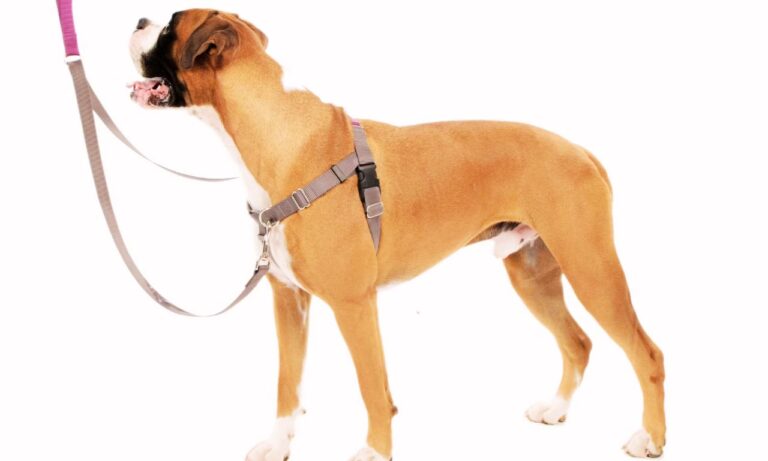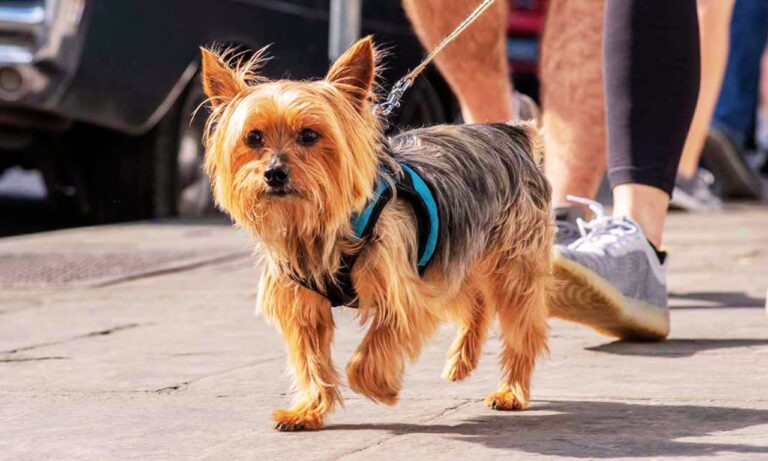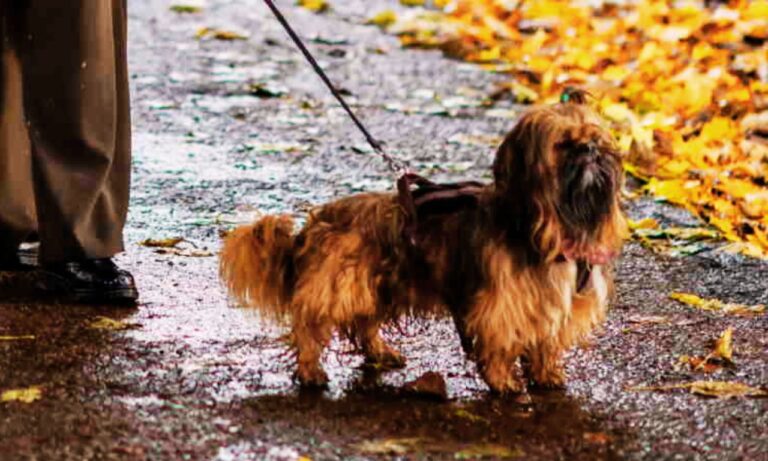Choosing the right collar for your dog is crucial for their comfort and safety. Whether you’re buying a new collar or replacing an old one, understanding how to measure your dog accurately is key. This guide will walk you through everything you need to know about dog collar measurements chart, from understanding the different types of collars to using a measurement chart effectively. Explore the various types of dog collar belts and find the perfect fit for your dog’s comfort and safety.
Blog Highlights
ToggleWhy Accurate Measurements Matter?
Before diving into the specifics of measuring your dog for a collar, it’s essential to understand why accuracy is so important. An ill-fitting collar can lead to discomfort, chafing, or even injury. On the other hand, a collar that’s too loose may slip off or get caught on objects, posing a safety risk.

By measuring your dog correctly, you ensure that the collar will fit well and provide the necessary comfort and security for daily wear.
Types of Dog Collars
There are various types of dog collars, each serving different purposes. Here are a few common ones:
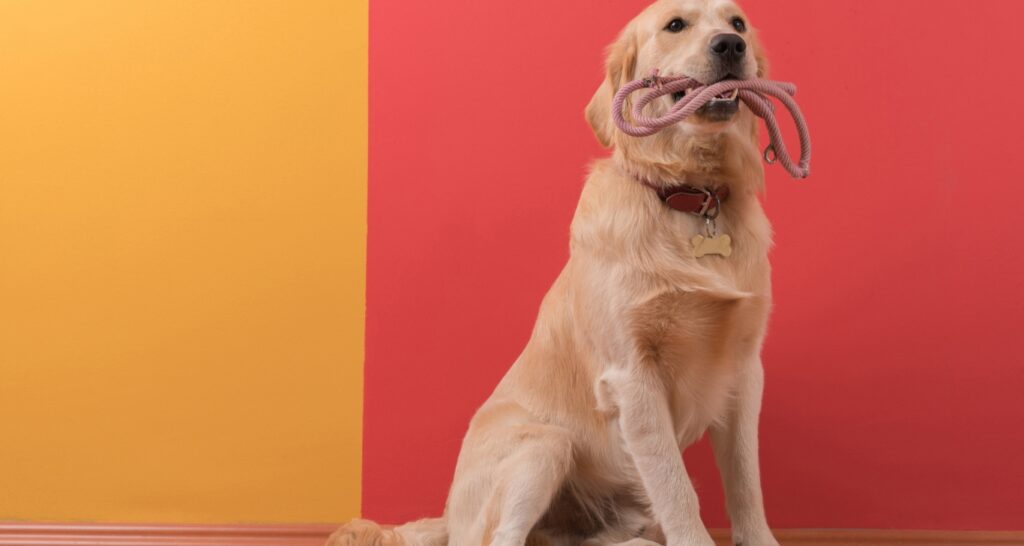
- Flat Collars: These are the most common type of collars, designed for everyday wear. They come in various materials, such as nylon, leather, or fabric.
- Martingale Collars: Ideal for dogs with narrow heads (like Greyhounds), martingale collars tighten when pulled, preventing the dog from slipping out.
- Halter Collars: These are used primarily for training and controlling dogs, as they apply pressure to the dog’s head rather than the neck.
- Harnesses: While not technically collars, harnesses are an alternative that distribute pressure more evenly across the dog’s body.
For this guide, we’ll focus primarily on flat collars, as they are the most commonly used and easiest to measure for.
How to Measure Your Dog for a Collar?
Measuring your dog for a collar is straightforward but requires a few specific steps to ensure accuracy. Follow these steps to get the right dog collar measurements chart:
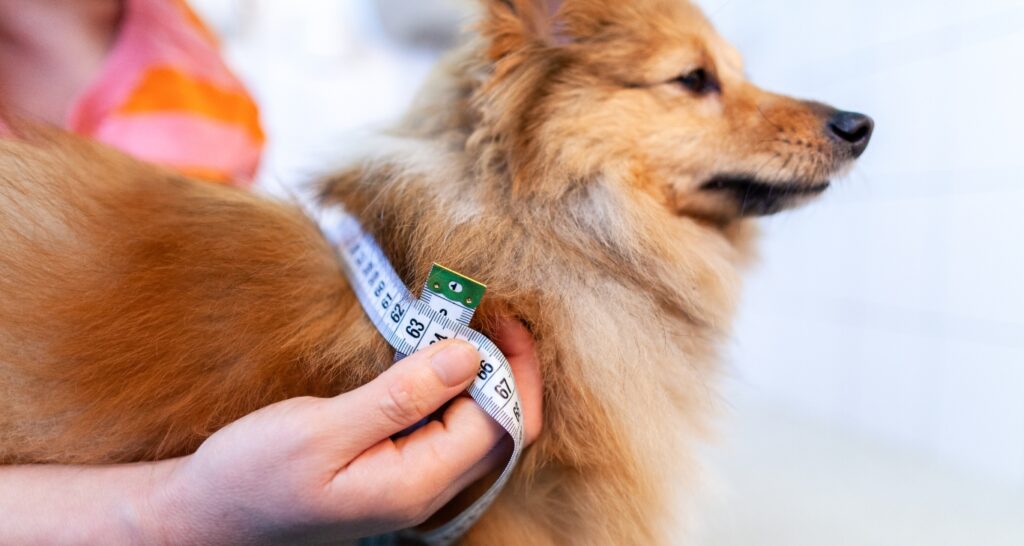
1. Gather the Right Tools
You’ll need:
- A flexible measuring tape (like the kind used for sewing).
- A pen and paper for noting down measurements.
- A friend or helper, if possible, to assist in measuring your dog.
2. Measure the Neck Size
To get the most accurate measurement:
- Position the Dog: Have your dog stand in a relaxed position. It’s best to measure when they’re calm and standing straight.
- Find the Right Spot: Place the measuring tape around the base of the dog’s neck, where the collar will naturally sit. This is usually just above the shoulders and not too tight.
- Take the Measurement: Make sure the tape is snug but not tight. You should be able to fit one or two fingers between the tape and the dog’s neck. Record this measurement in inches or centimeters.
3. Consider the Width of the Collar
The width of the collar is also important. A collar that is too wide may be uncomfortable, while one that is too narrow may not provide enough support. Generally, the width should be proportionate to your dog’s size:
- Small Dogs: 5/8 to 1 inch wide.
- Medium Dogs: 1 to 1.5 inches wide.
- Large Dogs: 1.5 to 2 inches wide.
4. Account for Growth and Adjustability
Puppies and growing dogs may need collars that can be adjusted to accommodate their changing sizes. Many collars come with adjustable straps, which allow for some flexibility. If your dog is still growing, consider choosing a collar with a wider range of adjustability.
5. Double-Check Your Measurements
It’s always a good idea to double-check your measurements to ensure accuracy. Measure twice to confirm that you have the correct size.
Dog Collar Measurements Chart
Here’s a handy chart to help you choose the right collar size based on your dog’s neck measurement:
Note: This chart is a general guideline. Always refer to the manufacturer’s size chart as sizes may vary between brands.
Choosing the Right Collar Material
The material of the collar can impact both comfort and durability. Here’s a quick overview of common materials:
- Nylon: Lightweight and easy to clean, nylon is a popular choice for everyday collars. It comes in various colors and patterns.
- Leather: Durable and stylish, leather collars are often chosen for their classic look. They may require more maintenance but can last for years.
- Neoprene: Often used for collars designed for water activities, neoprene is water-resistant and comfortable.
Adjusting and Maintaining the Collar
Once you’ve chosen the right collar, it’s important to ensure it remains in good condition and fits properly:
- Regular Adjustments: Check the collar regularly to make sure it’s not too tight or too loose. Adjust it as needed to maintain a proper fit.
- Cleaning: Follow the manufacturer’s cleaning instructions to keep the collar in good condition. Nylon and neoprene collars are usually machine washable, while leather collars may need special care.
- Replacement: Replace the collar if it shows signs of wear and tear or if it no longer fits properly.
Common Mistakes to Avoid
When measuring your dog for a collar, avoid these common mistakes:

- Measuring Too Tight: Ensure the measuring tape is snug but not tight. Too tight a measurement can result in an uncomfortable collar.
- Ignoring Growth: If you have a puppy or a dog that’s still growing, consider a collar that can adjust or a slightly larger size.
- Not Checking Adjustability: For collars with adjustable straps, make sure you choose one with a range that fits your dog’s current and potential future size.
Ensuring Comfort and Safety
Proper collar fitting is not just about finding the right size; it’s also about ensuring your dog’s comfort and safety. A well-fitted collar prevents a range of issues, from chafing and discomfort to potential health hazards.
Comfort: A collar that is too tight can cause chafing and irritation, particularly in areas where the collar rests against the skin. This can lead to sore spots, and in severe cases, skin infections. Conversely, a collar that is too loose can lead to accidental slips, especially if your dog is active or playful. An ill-fitting collar can also cause the dog to pull or tug excessively, which may lead to discomfort or strain on their neck and spine.
Safety: A collar that fits poorly can be a safety hazard. A collar that is too loose can get caught on objects, posing a risk of choking or injury. For dogs that are prone to pulling or running off, a properly fitted collar is essential to ensure it remains securely in place. For safety reasons, it’s important to ensure the collar has an appropriate breakaway feature or quick-release buckle, especially if you use it for walking or other activities where the risk of getting caught is higher.
Learn whether shock collars work in water and the implications for using them in aquatic settings.
How to Test Collar Fit?
After adjusting the collar to your dog’s neck size, it’s important to check the fit to ensure it’s correct:
- Finger Test: You should be able to fit two fingers comfortably between the collar and your dog’s neck. If you can fit more than two fingers, the collar may be too loose. If you can only fit one finger or none at all, the collar may be too tight.
- Check Movement: Ensure the collar is not causing any discomfort by observing how your dog moves. If they seem to be scratching at the collar or appear uneasy, it might not be fitting correctly.
- Adjust for Activities: If you use the collar for different activities (e.g., walking, playing, swimming), make sure it fits well for each of these scenarios. Some collars may need adjustment based on the activity to ensure they stay securely in place.
When to Replace the Collar?
Even with proper fitting and regular adjustments, collars do wear out over time. Signs that it’s time to replace your dog’s collar include:
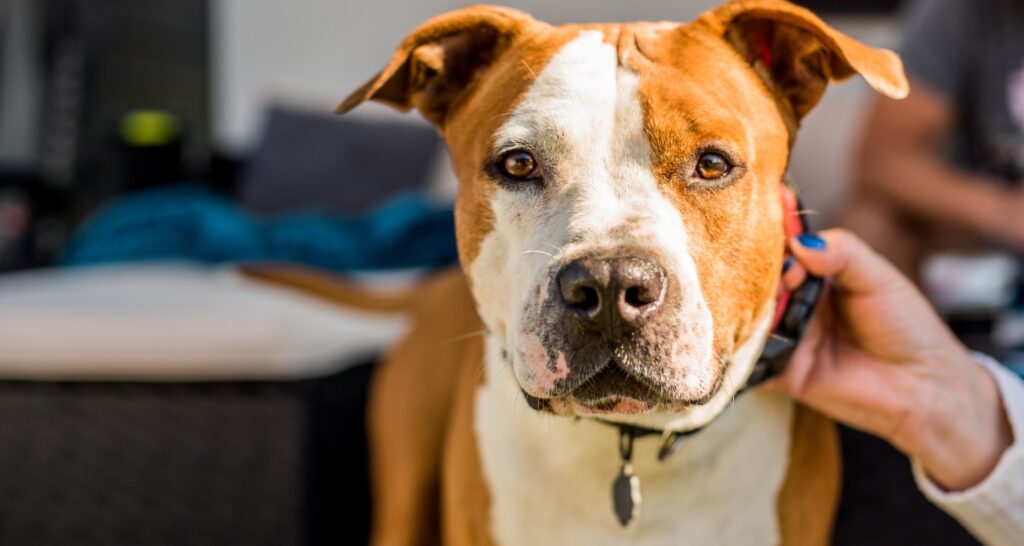
- Fraying or Damage: Visible wear and tear, such as fraying or broken buckles, can compromise the collar’s effectiveness.
- Loss of Adjustability: If the collar no longer adjusts properly or has lost its ability to secure, it’s time for a new one.
- Fit Issues: If the collar no longer fits well despite adjustments, it may need to be replaced.
Wrapping Up!
Selecting the right collar for your dog involves more than just picking a cute design. Accurate measurements ensure that the collar will be comfortable, functional, and safe. By following the steps outlined in this guide and using the measurement chart, you can find the perfect collar for your furry friend. Remember to periodically check the fit and condition of the collar to keep your dog happy and secure.
Choosing the right collar is an essential part of pet care, and with the right knowledge, you can make an informed decision that benefits both you and your dog. Hope so, now you know the dog collar measurements chart.


